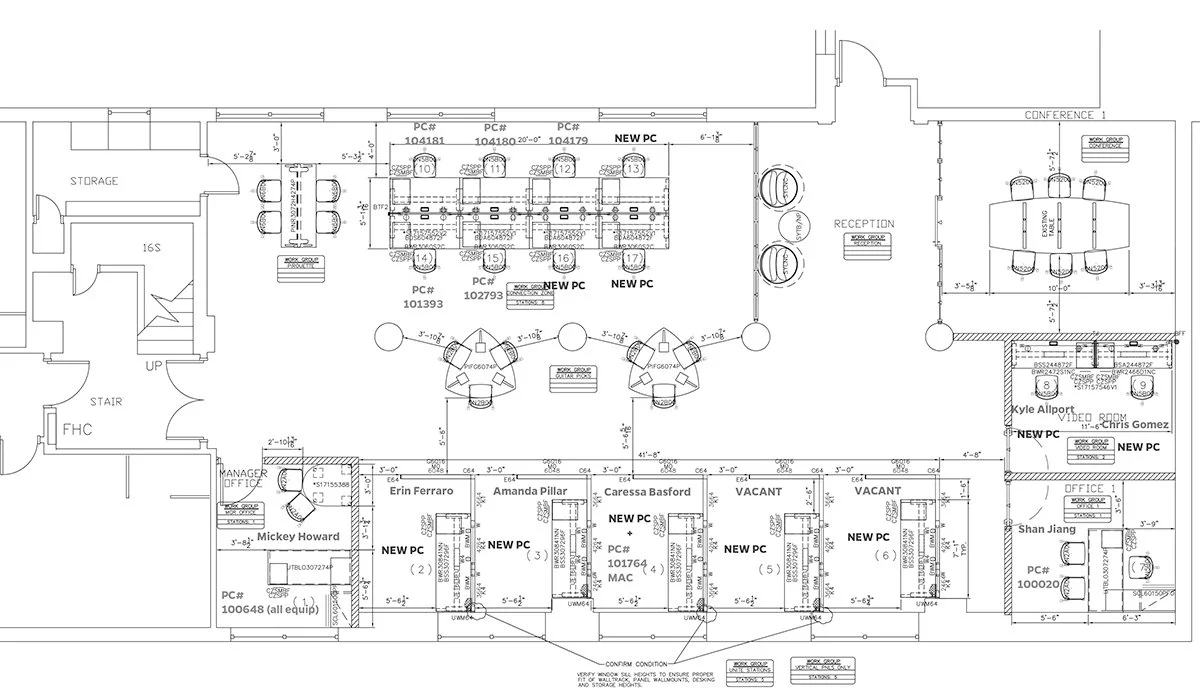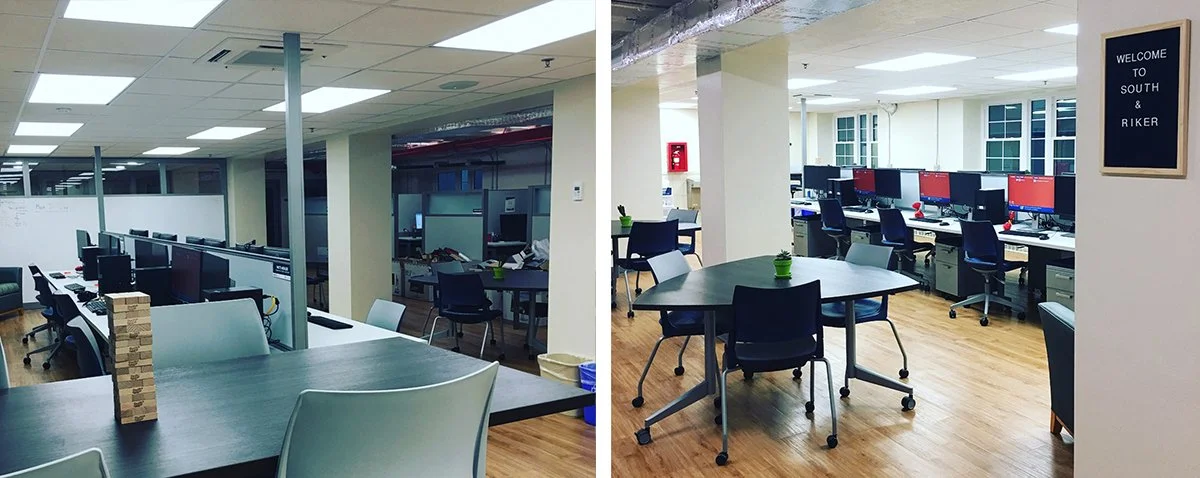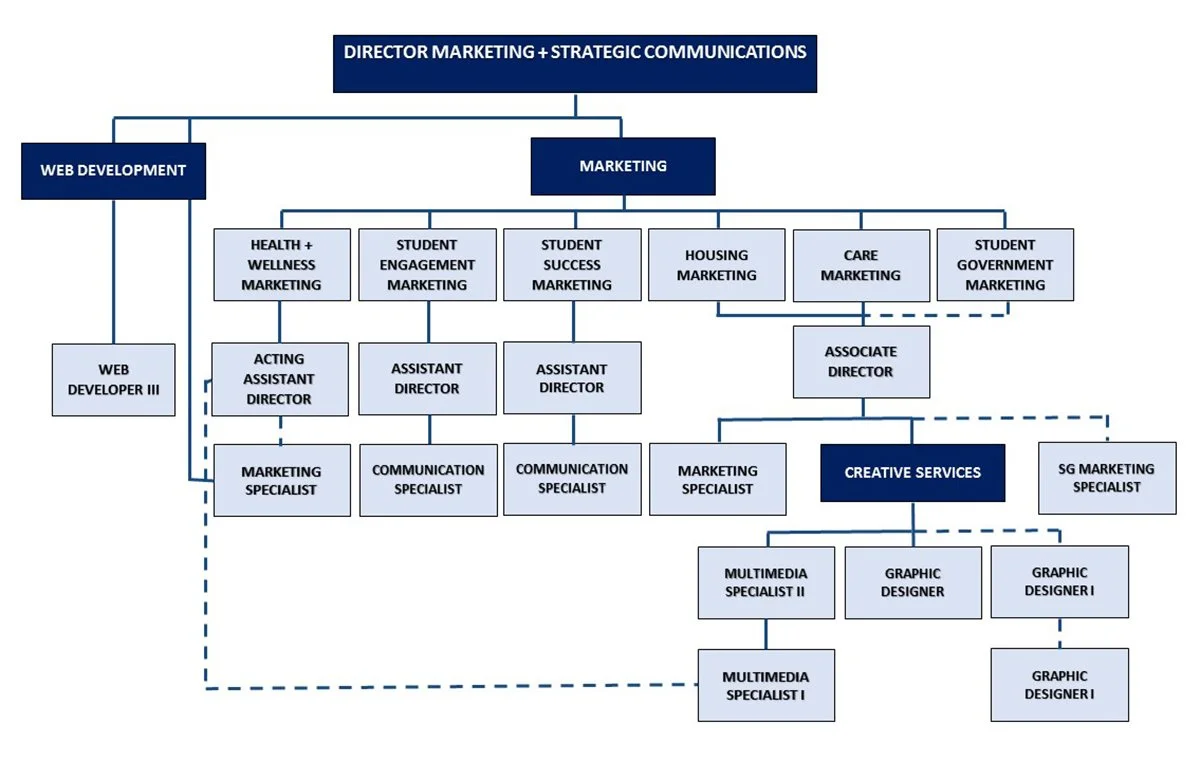Building an In-house Creative Agency
Introduction
I led the planning and development of a centralized, in-house creative agency at the University of Florida. The purpose of this organization is to produce marketing and communication campaigns that serve 54,000 students and their families within the Division of Student Affairs and its 13 departments. Over the course of this project, I managed a team of 35 people, with a $150,000 budget to complete an office renovation.Process
I helped define our process and standards for developing successful partnerships and stewarding companies. My role included outreach, evaluation, pitching, negotiations, and execution of the activation with the company.
Approaching partnerships with a marketing lens, I assisted companies in building out on-campus experiential marketing initiatives that matched the event and their objectives. This collaboration allowed companies’ activations to be more integrated and organic for audiences.
-
Leadership, Organization Strategy, Logistics
-
University of Florida
Challenge
The Division of Student Affairs operated within a de-centralized communications model. Some departments, depending on their resources, had staff serving as full-time MarCom professionals. Other departments had no one in those roles, and communication-related responsibilities rested on individuals with no formal training. This structure led to brand and messaging inconsistency and many generalists without specialties or expertise. More specifically, Student Affairs was lacking resources in digital communications and storytelling, spaces that are key to creating a meaningful connection with Gen Z.
Research
I conducted a benchmarking heuristic of top peer institutions, according to US News and World Report, examining organizational structures, staffing models and workflows.
Ideation
Gathering learnings on centralization strategies helped me to generate an informed hybrid model for a new marketing and strategic communications department.
I defined guiding principles articulating the rationale for this organizational change and worked to gain buy-in from various department directors and communication staff members.
Guiding Principles for Centralization:
Leverage our resources to be more aligned and do more
Broaden the scope of our communicators and create opportunities to grow the depth of talent on the team.
Tell stories with emotion and showcase the “why” to our students
Students don’t care about the department title or labels, they care about the impact
Amplify our messages across all platforms
A unified strategy will make us stronger and allow for more intentional and meaningful variations.
Space
In thinking about the office space for the new team, I wanted marketing project managers embedded within the departments they supported, while still having a centralized location to enhance creativity and collaboration. Using, Scott Doorley’s Make Space: How to Set the Stage for Creative Collaboration for inspiration, I worked with a team of architects to convert a garden-level storage space into a creative agency space.
We combined open-aired offices with block work stations to build a flexible environment ready for making, learning, imagining, and connecting. We lovingly named the space South & Riker after its’ location on campus.
Of course, physical space is just one component of cultivating an environment primed for creative activities. Through the re-organization process, I hired an incredibly talented and energetic associate director to manage day-to-day operations at South & Riker. With his support, we held monthly design challenges, weekly design-thinking exercises and celebrated team wins, creating a culture of creativity and engagement.
Test & Iteration
Cultivating buy-in through transparent and honest conversations was essential to my re-organization approach. Rather than have the Vice President dictate the new model to the department heads, I set up a series of conversations and pitches with the other directors. This process allowed for honest critique and new ideas, that helped frame the centralization model as an experiment. It was important to set up our organization structure with both stability through process and agility through innovation.
To keep things on track, I set up quarterly meetings with directors, to provide consistent effort reporting, show ROI, and allow for adjustments based on their feedback.
The opportunity to make minor tweaks and adjustments has allowed the marketing and strategic communications department to maintain positive and productive relationships with other departments.
Product
The Marketing and Strategic Communications Department includes 35 team members (15 full-time and 20 paid student staff) and functions as in-house creative agency. Our mission it to communicate optimism, excitement, care and progress in support of the student experience to various audiences.
In the MarCom spectrum, given our resources, I set up four areas of action.
Areas of Action:
Web Development
Creative Services
Marketing
News & Editorial
Annually, our agency turns out hundreds of video and design projects. We utilize Trello and a custom-built widget to track project management and pull effort reports to showcase return on investment.


